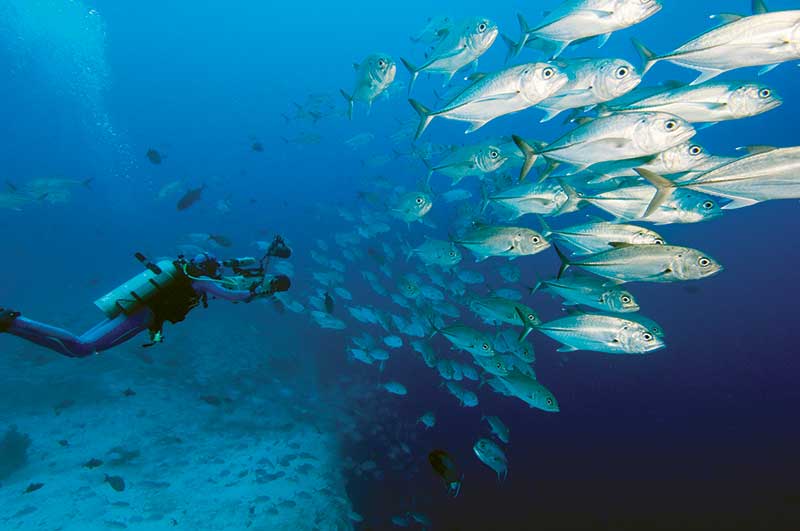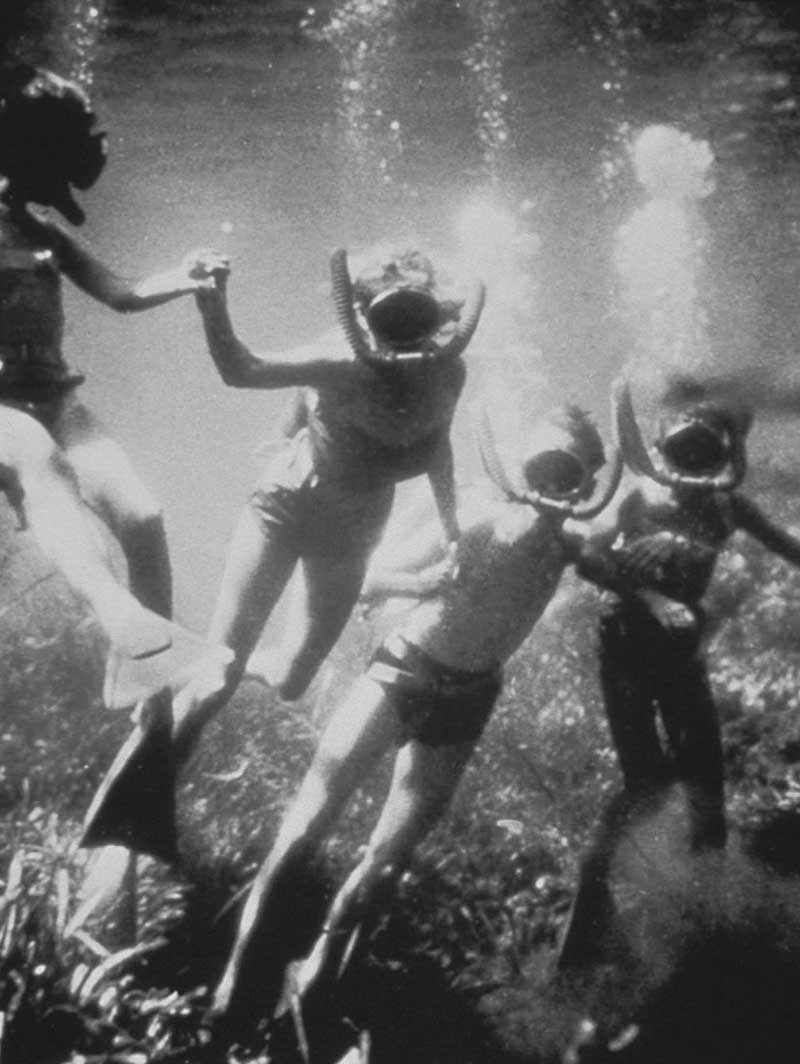Storytelling to Inspire Ocean Protection
By Jean-Michel Cousteau and Holly Lohuis

There are powerful meanings in the stories we share about our personal experiences in vastness of the ocean wilderness. Every scuba diver is a storyteller, sharing personal experiences of encounters with the beautiful underwater world, a place many people will never see for themselves. The art of storytelling is a part of human culture, a way to entertain and pass on knowledge. I always love hearing a great story about one’s amazing encounters with a beloved marine animal or favourite dive location.
But I am going to guess that many of your stories are about an underwater world that was once diverse, prolific, and now much different today. We have all witnessed the decline in abundance of some of our favourite ocean species. Our stories are personal examples of what it was like in the past. My hope is by sharing our experiences we can help continue to build the momentum needed to defend and protect our water planet.
The Med in the ’40s
For me, my stories of my first dives date back to the mid 1940’s, 75 years ago, off the coast of Southern France in the Mediterranean Sea. The Med was a much different place back then. The rocky reefs used to support lush gardens of brown algae and the surrounding sandy bottoms were thick meadows of sea grass beds. These underwater oases were the foundations of a diverse ecosystem, supporting hundreds of species of invertebrate, fishes, and even some marine mammals. I have fond memories of watching my father and his friends spear huge fish with little effort. But today in many areas of the French Riviera, these underwater gardens are long gone, and the wildlife is a fraction of its original abundance and diversity.

These temperate waters of the Mediterranean Sea also used to support huge schools of bluefin tuna. I always love to share the story of these remarkable fish. They can swim across entire oceans and dive deeper than 3,000 feet (915m), sprint up to 25 miles an hour (40km/h) through a medium 800 times thicker than air. Out of more than 20,000 species of fish, the bluefin is one of very few fish that is warm-blooded. This gives them greater stamina than their cold-blooded relatives, allowing them to run down cold-blooded prey and to have access to colder and deeper, nutrient-rich waters. Simply put, the bluefin tuna can out-eat, out-grow, out-swim, out-dive and out-migrate just about any fish in the sea.
There are three species of bluefin tuna found around the world: Atlantic (the largest and most endangered), Pacific, and Southern Ocean. Most catches of the Atlantic bluefin tuna are taken from the Mediterranean Sea, which is the most important bluefin tuna fishery in the world. Prized for high-quality sushi, the international commission responsible for managing Atlantic bluefin is failing to protect this magnificent fish. This population—along with most tuna stocks—is fully exploited, meaning at best there is little to no room for expanding the fishery and at worst, they are in danger of collapsing. Unfortunately, the tuna fishery is just one of many industrial fisheries today where greed, high-tech equipment, and ignorance is causing their decline. Every year we fish more than 150 million tons of ocean wildlife globally.
If only we dignified bluefin tunas as evolutionary masterpieces and critical members of an oceanic living system, could we then feel empowered to support the fisheries that are well-managed and sustainable. We need to think twice about those that are not and stop ordering bluefin tuna at our favourite sushi restaurants.
Understand the connections
Our individual stories fit into the much bigger planetary story of environmental systems that regulate the stability and resiliency of our planet. We have to ask ourselves how can we allow such unsustainable practices of industrial fishing that is happening around the world to continue, if it might ultimately set off irreversible collapse of some of the most beloved marine species.
My motto has long been that “everything is connected”. Now we as consumers need to better understand the connection between monumental struggles for survival of entire species and the items on our dinner plates. The more we ask and educate ourselves about how our favourite seafood is harvested, where it was caught, and by what method it was extracted from the sea, the more we are a part of the critical connection that determines the future—of not only bluefin tuna but for all marine life. It is a story I feel so compelled to share: protecting our global fisheries is a race against time, but we can learn from past mistakes, share our personal experiences, and support science that is educating us to live in better balance with nature. There is always the ability for us to change when it comes to exploiting wildlife from the ocean.
This year I am celebrating 75 years of diving. 75 years of seeing first-hand the changes happening beneath the surface of the sea due to the ‘out of sight, out of mind’ mentality. And yet I’ve also seen the transformative power when people come together to find shared interests and solutions to benefit local communities, preserve valuable natural systems, and support sustainable fisheries. I will never stop sharing these stories of hope, reaching people’s hearts, and inspiring generations to care for our natural, wild planet. My hope is future generations can enjoy the same privilege I have appreciated through my decades of exploring the undersea world.
Leave a Comment







